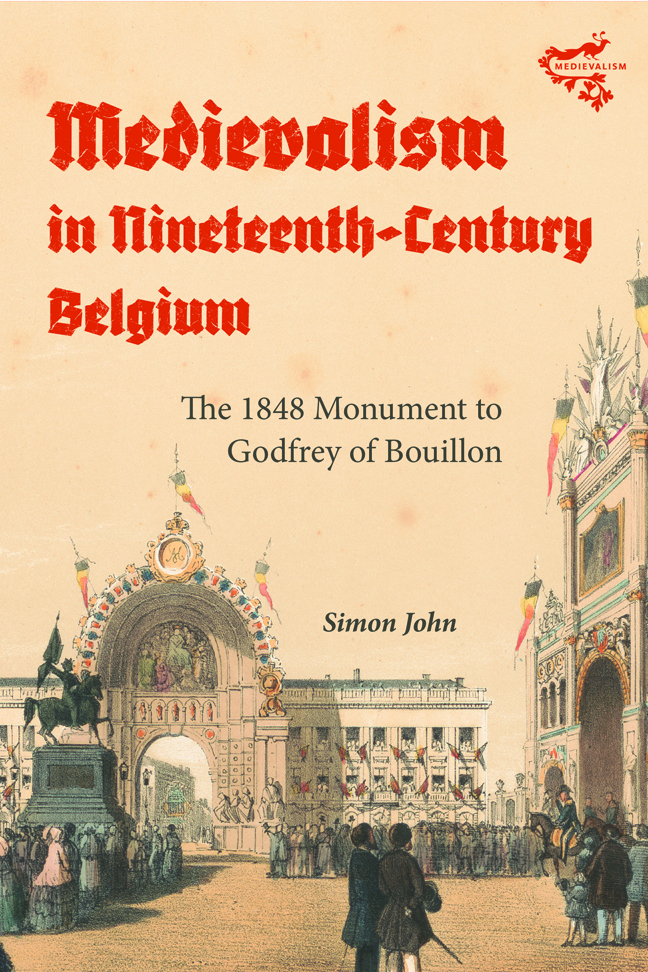Book contents
- Frontmatter
- Contents
- List of Illustrations
- Acknowledgments
- A note on language and names
- List of Abbreviations
- Preface
- Introduction
- 1 State-building, historical culture and public monuments in nineteenth-century Belgium
- 2 The physical setting of the monument: Brussels’ Place Royale
- 3 The creation of the monument
- 4 The changing meanings of the monument
- 5 The monument as a lieu de mémoire I: culture and politics
- 6 The monument as a lieu de mémoire II: history and national identity
- Conclusion
- Bibliography
- Index
- Medievalism
1 - State-building, historical culture and public monuments in nineteenth-century Belgium
Published online by Cambridge University Press: 09 January 2024
- Frontmatter
- Contents
- List of Illustrations
- Acknowledgments
- A note on language and names
- List of Abbreviations
- Preface
- Introduction
- 1 State-building, historical culture and public monuments in nineteenth-century Belgium
- 2 The physical setting of the monument: Brussels’ Place Royale
- 3 The creation of the monument
- 4 The changing meanings of the monument
- 5 The monument as a lieu de mémoire I: culture and politics
- 6 The monument as a lieu de mémoire II: history and national identity
- Conclusion
- Bibliography
- Index
- Medievalism
Summary
The independence of Belgium is recent, but the Belgian people have existed for a long time.
François-Jean Wyns de Raucour (d.1857), mayor of Brussels (1840–8), at the inauguration ceremony for the statue of Andreas Vesalius, in the Place des Barricades (Barricadenplein), Brussels, on 31 December 1847.
As part of the wider process of national consolidation commenced in Belgium after 1830–1, political elites sought to instrumentalise the past by advancing a teleological narrative of history that aligned the memory of the Belgian Revolution with the deeds of figures from the earlier history of the southern Netherlands. As a result, many figures who lived long before Belgian independence – Godfrey of Bouillon and a number of other medieval figures among them – were reimagined in this era as national heroes. According to this narrative, a proto-Belgian nationhood had existed long before 1830–1, but had only become a political reality through the Belgian Revolution. The establishment of an independent Belgium was thus framed as the culmination of the slow-burning yet inevitable advance towards nationhood. These appeals to the past, of course, reveal less about the actual history of the southern Netherlands than they do about the efforts of the ideas of nineteenth-century elites to legitimate Belgium's claims to nationhood.
Through an exploration of these developments, this chapter pinpoints key features of nineteenth-century Belgian ‘statuomania’. In that period, the national government and other political authorities drove the creation of new monuments throughout Belgium. By commemorating luminaries from the earlier history of the southern Netherlands with statues, and creating monuments to the Belgian Revolution, they sought to give physical form to the teleological narrative of history that underpinned their programme of national consolidation. At the inauguration of Brussels’ monument to Andreas Vesalius in 1847, Wyns de Raucour, the city's mayor, articulated precisely this notion, claiming that while the Belgian nation was new, the Belgian people was a venerable one. Crucially, efforts to create statues in nineteenth-century Belgium diverged from the practice in the surrounding European nations in two key respects. Firstly, while middle-class associations generally conceived and raised the necessary funds to create new public monuments in nations including France and the German states in this era, in contrast, in Belgium it was the national government and other political authorities that generally did so.
- Type
- Chapter
- Information
- Medievalism in Nineteenth-Century BelgiumThe 1848 Monument to Godfrey of Bouillon, pp. 19 - 42Publisher: Boydell & BrewerPrint publication year: 2023



